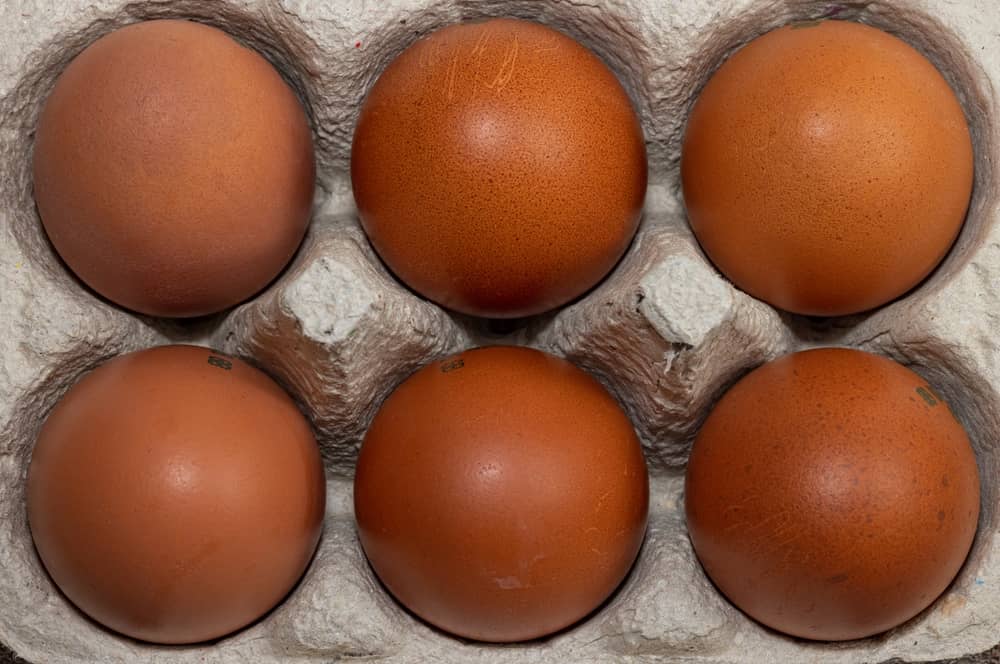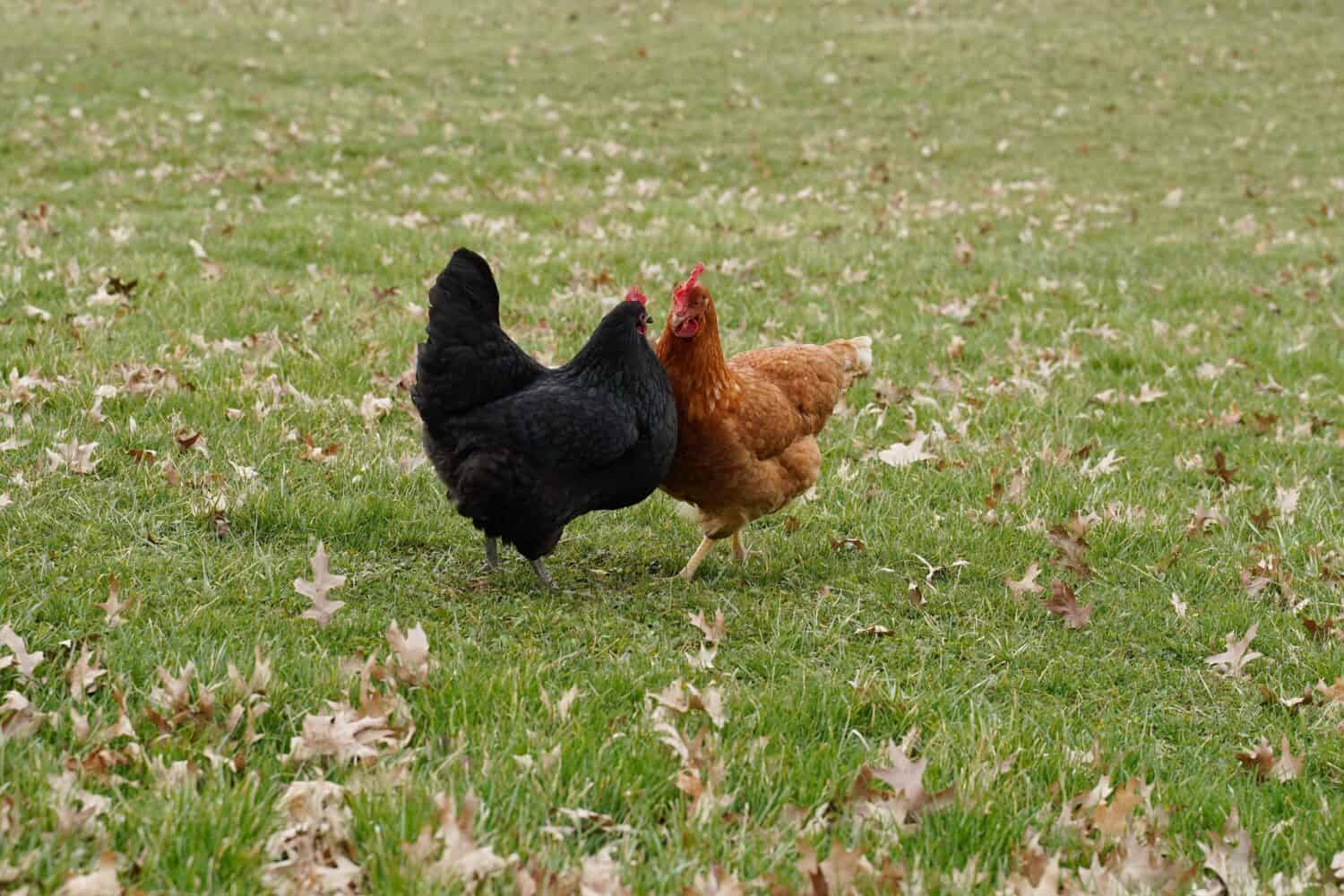If you’re looking to start your own chicken flock, or want to add some variety to your existing coop, you’d be hard-pressed to find a better candidate than the cinnamon queen. If you’re only expanding your poultry-related knowledge, then there is plenty to keep you interested in this relatively new and hardy breed of chicken. Here is everything you need to know about the cinnamon queen!
Overview of the Cinnamon Queen

The cinnamon queen is a hardy, friendly, and heavy breed of chicken.
©Kathy D. Reasor/Shutterstock.com
The cinnamon queen is a newcomer to the poultry scene. The first successful breeding of the cinnamon queen occurred during the current modern farming age. Many farmers often describe them as being sweet and docile. The cinnamon queen is bred to be able to withstand high and low temperatures, get along with other chicken breeds, lay many eggs, grow fast, and provide lots of meat at the end of the egg-laying life.
They are particularly valuable for their ability to start laying eggs as early as 16 weeks old. This means that farmers can raise a new flock, or replace an existing flock, with productive egg-laying hens in a short amount of time.
The cinnamon queen is a hybrid. They are a cross between a Rhode Island White female and a Rhode Island Red male chicken. This cross makes them extremely docile, amenable, and a perfect option for beginning farmers.
Cinnamon Queen Breed

Cinnamon queens will often run to their owners to greet them or receive affection.
©Closed Canvas/Shutterstock.com
While most cinnamon queens live for about six years, if you take care of your chickens properly, they can live to be as old as 10 years. This gives them a longer life expectancy than most other mixed-breed chickens.
Farmers bred the cinnamon queen to be a hardy chicken, so they are less likely to get sick due to the many poultry diseases that ravage modern chicken farms. While they get along with most other chicken breeds, the cinnamon queen rooster can be very assertive, often putting them at the top of the pecking order when mixed with other breeds.
Cinnamon Queen Appearance

You can see the red and white feathers that give the cinnamon queen her name.
©Kathy D. Reasor/Shutterstock.com
Compared to other chicken breeds, the cinnamon queen is a sturdy, large, and heavy breed. The roosters typically reach a weight of 5.5 to 7.5 pounds. The hens can reach a weight between 4.5 and 5.5 pounds.
The cinnamon queen hen is recognizable by her red or brown coat (often resembling a cinnamon color, hence their name). They have yellow legs (with no leg or feet feathers) and a red comb.
The cinnamon queen rooster is white with black or golden accents.
Because they are hybrid breeds, any chicks that successfully hatch from a cinnamon queen couple can vary in color. Don’t expect your subsequent generations to match the parents if you plan on increasing the size of your flock.
Egg Laying

The cinnamon queen lays large, brown eggs like these.
©Carl DeAbreu Photography/Shutterstock.com
The cinnamon queen is a top performer when it comes to egg laying, and not just in the amount they can produce.
Because cinnamon queen hens start laying at such an early age, they can produce much more than other similar layers. If you keep them healthy and in a comfortable environment away from predators, they can lay up to 300 eggs a year. This is helped by the fact that they are a hardy breed and often lay more eggs in the winter than during other seasons.
Additionally, their eggs are usually larger when compared to the eggs of other breeds. They generally lay extra-large and brown eggs.
Cinnamon queen hens are able to maintain their high egg production for about half their typical lifespan (around three years).
Final Considerations

With some planning, you can introduce the cinnamon queen to an existing flock. They will get along with many other breeds.
©Kathy D. Reasor/Shutterstock.com
Now you know everything you need to know about the cinnamon queen. Besides being a tough, productive, and cost-efficient chicken, the cinnamon queen is a welcome addition to a farm of any size because they are so agreeable and easy to maintain. Many families keep cinnamon queens simple because they are good company! Cinnamon queens are not violent or territorial. If you have young children and are considering introducing a chicken into your backyard farm, don’t be surprised when the cinnamon queen bonds quickly to your family and comes to you for attention and affection.
| Attribute | Cinnamon Queen |
|---|---|
| Hen Color | Red and brown |
| Rooster Color | White with highlights |
| Personality | Friendly, docile, assertive |
| Physicality | Hardy; can handle hot and cold temperatures |
| Hen size | 4.5 to 5.5 pounds |
| Rooster Size | 5.5 to 7.5 pounds |
| Eggs laying | 250–300 eggs per year. Large and brown. |
| Benefits | Great for beginner farmers, children, and farms of all sizes |
Thank you for reading! Have some feedback for us? Contact the AZ Animals editorial team.







